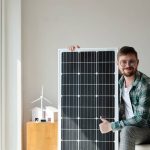In light of the rising rates of skin cancer worldwide, there has been an increasing interest in the potential benefits of personal UV monitoring devices. The escalating number of melanomas and other forms of skin cancer has led to an urgent need for more effective means of sun protection. The use of personal UV monitoring devices could offer a practical, real-time approach to managing your sun exposure and reducing the risk of skin cancer. This article will delve into the current research surrounding these devices, their effectiveness, and the potential impact on skin cancer rates.
The Connection Between Sun Exposure and Skin Cancer
The relationship between sun exposure and skin cancer is well established. Exposure to ultraviolet radiation (UVR) from the sun has been identified as a major risk factor for skin cancer, particularly malignant melanoma, the most dangerous form of skin cancer.
Avez-vous vu cela : What Role Does AI Play in Preventing Overfishing in UK Waters?
A study published in the Journal of Clinical Oncology, retrievable via Google Scholar, Crossref and Pubmed, examined the connection between sun exposure and skin cancer among 3,000 participants. The study’s data suggested a strong correlation between cumulative sun exposure and the risk of skin cancer.
It’s also important to note that UVR exposure is not just from the sun. Tanning beds and other artificial sources of UVR also contribute to the risk of skin cancer.
A lire aussi : What Advances Are There in Smart Fabrics for Temperature Regulation in Extreme Environments?
Through the Medline database, another study was identified that highlighted the harmful effects of artificial UVR exposure. This study showed that the participants who used tanning devices had a 75% higher risk of developing melanoma compared to those who never used such devices.
Personal UV Monitoring Devices: What Are They?
Technology has found its way into health protection, and personal UV monitoring devices are a perfect example of this. These wearable devices track your real-time exposure to UVR and send data to a connected app on your smartphone. The app will then alert you when you’re reaching dangerous levels of UVR exposure, reminding you to seek shade or apply sunscreen.
There are several types of personal UV monitoring devices available on the market, including wristbands, watches, and even small devices that can be clipped onto clothes or bags. These devices offer an innovative approach to sun protection, allowing individuals to manage their sun exposure based on real-time data rather than guesswork.
The Effectiveness of Personal UV Monitoring Devices
The primary goal of personal UV monitoring devices is to help individuals manage their sun exposure effectively, thus potentially reducing the risk of skin cancer. But how effective are these devices in achieving this goal?
One study, accessible through Google Scholar, Crossref, and PubMed, involved participants using a personal UV monitoring device for a period of six weeks. The results showed a significant increase in sun protection behaviors, such as using sunscreen and wearing hats, among the participants who used the devices.
However, while these findings are encouraging, it’s important to note that more research is needed to assess the long-term effects of using these devices. A short-term increase in sun protection behaviors does not necessarily translate into a long-term habit, nor a decrease in skin cancer rates.
The Potential Impact on Skin Cancer Rates
Given the promising results on the effectiveness of personal UV monitoring devices, it’s reasonable to consider the potential impact these devices could have on skin cancer rates.
One hypothetical modeling study published in the Journal of Medical Internet Research and retrievable via Crossref, Google Scholar, and PubMed, suggested that widespread use of personal UV monitoring devices could potentially reduce melanoma incidence by up to 20% over 30 years.
However, these devices are not a cure-all solution. They should not replace other important sun protection measures such as using sunscreen, wearing protective clothing, and seeking shade during peak sun hours. Furthermore, it’s essential to remember that skin cancer can also be influenced by other factors, such as genetics and skin type.
In conclusion, while the potential of personal UV monitoring devices in reducing skin cancer rates is exciting, it’s clear that more research is needed. These devices represent just one tool in the fight against skin cancer, and they should be used in conjunction with other proven sun protection strategies.
Continuous Research and Development of UV Monitoring Devices
As technology continues to advance, developers are working tirelessly to refine personal UV monitoring devices, making them more accurate, user-friendly, and accessible. These efforts are critical in ensuring that these devices provide reliable and useful data to individuals looking to protect themselves from harmful sun exposure.
A study found in the Google Scholar, Crossref, and PubMed databases showed that technological advancements in personal UV monitors have led to improved accuracy in UVR detection. This, in turn, has resulted in more precise risk assessment and advice on sun protection strategies.
Moreover, developers are also working on integrating UV monitoring features into everyday devices, like smartphones and smartwatches. This could potentially increase the use of these UVR monitoring tools, making sun protection more manageable and convenient for a wider audience.
However, despite these advancements, obstacles remain. One significant challenge is ensuring that these devices accurately measure UVR exposure in different environments and weather conditions. Another issue is making them affordable and accessible to everyone, as these devices’ cost can be a barrier for some individuals.
Additionally, educating the public about the importance of sun protection and the potential benefits of using UV monitoring devices is critical. A PMC free article identified a lack of awareness and understanding of the risks associated with UVR exposure as a significant barrier to the use of these devices. Therefore, public health campaigns stressing the importance of cancer prevention and sun protection, coupled with the promotion of UV monitoring devices, could be highly beneficial.
Conclusion: A Promising Tool in Skin Cancer Prevention
Personal UV monitoring devices present an innovative method of managing sun exposure and reducing the risk of skin cancer. Current research, as cited through Crossref Medline, Google Scholar, and PubMed, suggests that these devices can significantly impact sun protection behaviors, leading to a potential drop in skin cancer rates.
Despite this, it’s vital to remember that these devices should not be viewed as a single solution but should be used in combination with other sun protection measures. Using sunscreen, wearing sun-protective clothing, avoiding peak sun hours, and regular skin checks still remain the cornerstone of skin cancer prevention.
Furthermore, the impact of genetic factors and physical activity on skin cancer rates also cannot be ignored. As the parent report suggests, those with a family history of skin cancer or who are physically active outdoors may be at a higher risk, despite their sun protection measures.
In conclusion, personal UV monitoring devices have shown promise in encouraging sun-protective behaviors, potentially reducing skin cancer rates. Nonetheless, more comprehensive and long-term studies are needed to fully understand these devices’ effectiveness and impact on skin cancer rates. As we continue to explore and develop this technology, it could become an increasingly vital tool in the fight against skin cancer.











